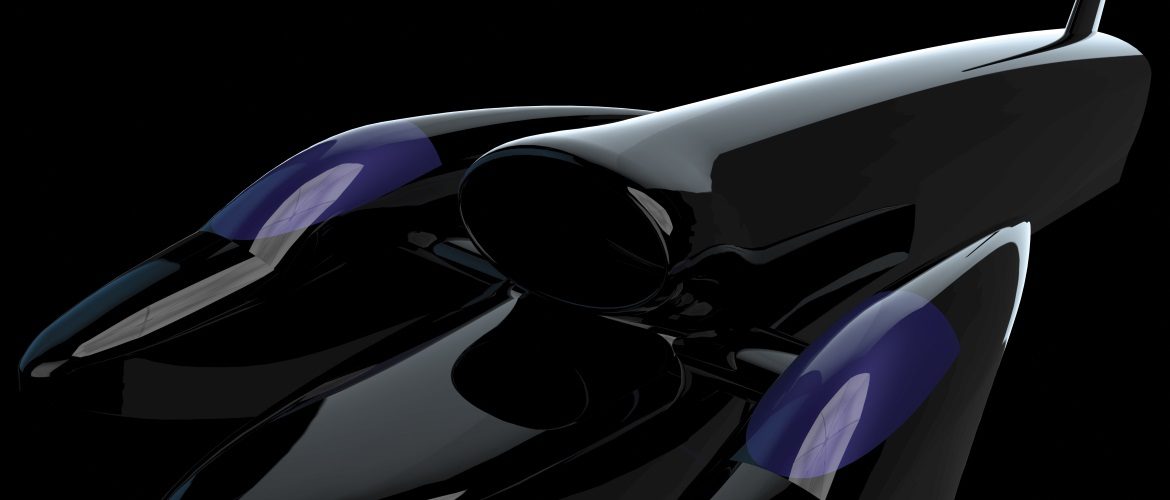Fresh thinking
The Quicksilver craft has many features that mark it out as unique. A fresh approach has been taken to the challenge of travelling fast on water. Central to this is an appreciation of the fundamental relationship between safety and speed – our philosophy being that the safer we can make the boat, the faster the speeds it will be capable of.
Extensive research conducted over many years led us to a configuration we believe offers great potential.
Here are some key examples of innovation in its design ...

Quicksilver is a 'four-pointer'. This refers to its unique 'footprint' on the water when travelling at speed. All previous hydroplanes designed for contesting the World Water Speed Record have ridden on three supporting surfaces when planing, but the four-point arrangement offers the potential for greater stability at high speeds. An analogy can be drawn with a car having four wheels as opposed to three.

Quicksilver has great size, weight and power, turned to its favour. As the largest boat ever built for World Water Speed Record competition, its extended length and width enhance high-speed stability. As the heaviest too, due to its mighty engine, it is also by far the most powerful. All that extra thrust means it will keep accelerating when other boats run short of breath.

Quicksilver has enhanced weight distribution. We have been clever with how we've managed the boat's additional weight. By siting the engine well forward, opting for an off-centreline driver's cockpit position, we've ensured that most of the craft's overall mass is at the front, thereby increasing high-speed stability by a further margin. Previous boats in this class have had mid- to rear-engined layouts.

Quicksilver is a two-seater. Siting the engine well forward in the boat displaced the driver's cockpit to one side, allowing a second seating position to be created on the opposite side to counterbalance the weight offset. It's the first time since the 1950s that a two-seat format has been chosen for a craft of this type. An engineer or observer can travel in the second seat.

Quicksilver has a turbofan engine. It is the first boat in World Water Speed Record history to be turbofan-powered. Turbofans are more efficient than standard turbojet engines, both in terms of power-to-weight ratio and fuel consumption. The engine selected is the Rolls-Royce Spey Mk.101, which was originally designed to power aircraft operating from the decks of naval aircraft-carriers and so has well-proven reliability in the marine environment.

Quicksilver is built with a unique combination of materials. So as to best match different areas of the boat's structure to the demands that will be placed on them, a wide variety of materials and construction methods are being employed. This bespoke approach enhances strength-to-weight performance and attains a level of sophistication in construction that's unsurpassed in this class.

Quicksilver can gather test-data. An array of sensors and related equipment is being installed to measure and store information on the boat's performance for detailed analysis. This will allow us to go faster in the knowledge that we are safe to do so. More than that, the craft can become a unique resource with which to conduct research. A highly-instrumented, high-speed waterborne testbed.
Images © QWSR Ltd.


